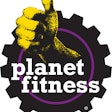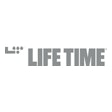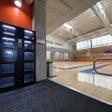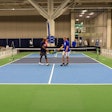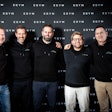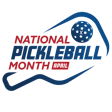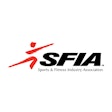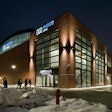Source: National Lighting Bureau
It’s not hype: A lighting revolution is really under way, thanks to the Internet of Things (IoT). The issue was explained and discussed by an expert panel at the National Lighting Bureau’s Annual Lighting Forum. A video of the discussion is available for free viewing at the NLB website.
Shepherdstown, WV – Lighting and the Internet of Things (IoT) was the subject of a particularly eye-opening panel discussion – “Illuminating the Future, Part 2” – at the National Lighting Bureau’s Annual Lighting Forum. Moderated by Edison Report Editor and Publisher Randy Reid, the panel comprised:
Mark Lien, LC, CLEP, CLMC, HBDP, LEED BD&C, Industry Relations Manager, Illuminating Engineering Society;
James M. Yorgey, P.E., LC, CTS, Lutron Electronics Company, Inc.; and
Carol Jones, Senior Director of Lighting Relations, Enlighted.
Ms. Jones characterized the issue when she commented that “Lighting is not just about lighting anymore…. So many things are possible that have not been before.”
Panelists agreed that issues associated with “connected” outdoor lighting are far different from those associated with indoor issues, but both provide challenges. For outdoor lighting systems, the key concern is the lighting pole, which is now seen as an essential element of smart-cities development. Outdoor lighting poles can be equipped with a variety of sensors that can provide data on traffic conditions, weather conditions, temperature, sound (such as the sound of gun shots), available parking spaces, as well as cameras and more. Some poles will also serve as charging stations for delivery drones, with other applications seemingly limited only by the imagination.
Indoors, luminaires – lighting fixtures – will be major factors, with each one having a “granular-sensing” capability, picking up data about specific issues and communicating that data to other connected devices, including elements of a building’s heating, ventilating, and air-conditioning (HVAC) system. In all cases, however, cyber security will be an issue, but not one that lighting-system specialists can deal with on their own. As such, panelists agreed, teams of specialists will be needed to deal with the many issues involved.
As far along as some might believe connected lighting and the IoT are, we seem to be far closer to the start than the finish. As Mr. Lien noted, even the terms being used have not yet been agreed upon. He reported that the American National Standards Institute (ANSI) is only now developing an “American national standard of terms you might think we have defined already, like interoperability, physical interchangeability, and many others…. We're very much at the initial stages of this IoT revolution.” Sounding a note of caution, he commented that “people coming in from Internet companies and electronics companies undervalue lighting. They say ‘Lighting is easy.’” Panelists agreed that the lighting industry itself needs to become a vocal part of the IoT discussion, to help ensure that lighting designed to meet the needs of connected systems first meets the needs of the people who rely on lighting.
Mr. Yorgey said that the building-construction process itself will have to change, given the collaboration that will need to occur between constructors of electrical and lighting systems, HVAC systems, and security systems, among others, because – if the systems are to communicate with one another – those installing them need to communicate even more. Ms. Jones noted that this need is likely to encourage the development of new services and service organizations, and will likely have an effect on electrical contractors in particular.
Mr. Lien observed that the connected-lighting concept is revolutionary in scope and, for the lighting industry, may be a revolution even more profound that that associated with solid-state lighting. And in the meantime, yet another revolution is occurring, in the field of light and health. As Mr. Reid summed up, “Buckle up.”
Watch “Illuminating the Future, Part Two” free of charge at https://nlb.org/lighting-forum-videos/.
About the National Lighting Bureau
The National Lighting Bureau is an independent, IRS-recognized not-for-profit, educational foundation that has served as a trusted lighting-information source since 1976. The Bureau provides its services to the public free of charge, thanks to the generous funding of the organization’s sponsors: professional societies, trade associations, labor unions, manufacturers, and agencies of the U.S. government, including:
Current, Powered by GE;
Forest Lighting;
Illuminating Engineering Society (IES);
Imperial Lighting Maintenance Company;
interNational Association of Lighting Management Companies (NALMCO);
International Brotherhood of Electrical Workers (IBEW);
Lighting Controls Association (LCA);
LumenOptix;
Lutron Electronics Company, Inc.;
Luxtech;
National Electrical Contractors Association (NECA);
National Electrical Manufacturers Association (NEMA);
OSRAM; and
U.S. General Services Administration.
Obtain more information about the Bureau by visiting its website (www.nlb.org) or by contacting its staff at [email protected] or 304.870.4249.
















